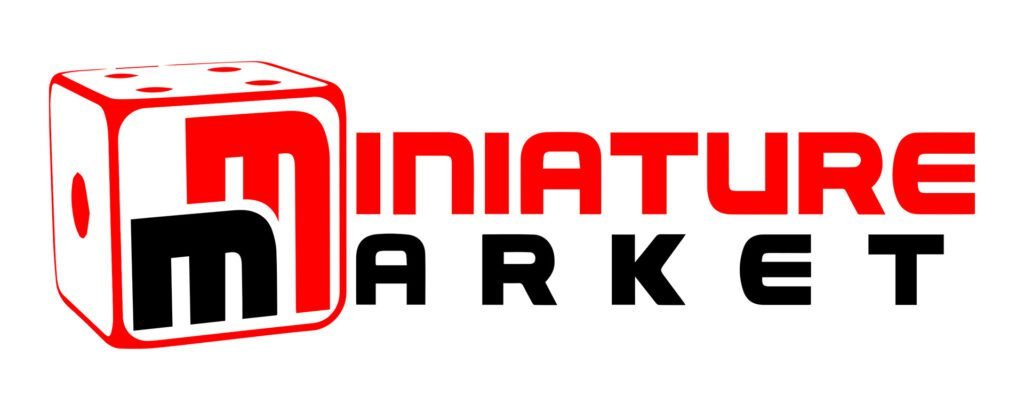
Today we’re diving into Andromeda’s Edge. This is a highly anticipated sequel to Dwellings of Eldervale, designed by Luke Laurie & Maximus Laurie, & it brings a unique sci-fi twist to the epic board game landscape. So, let’s break it down—what it is, what’s good, what’s bad, & if you should pick it up. Let’s get into it.
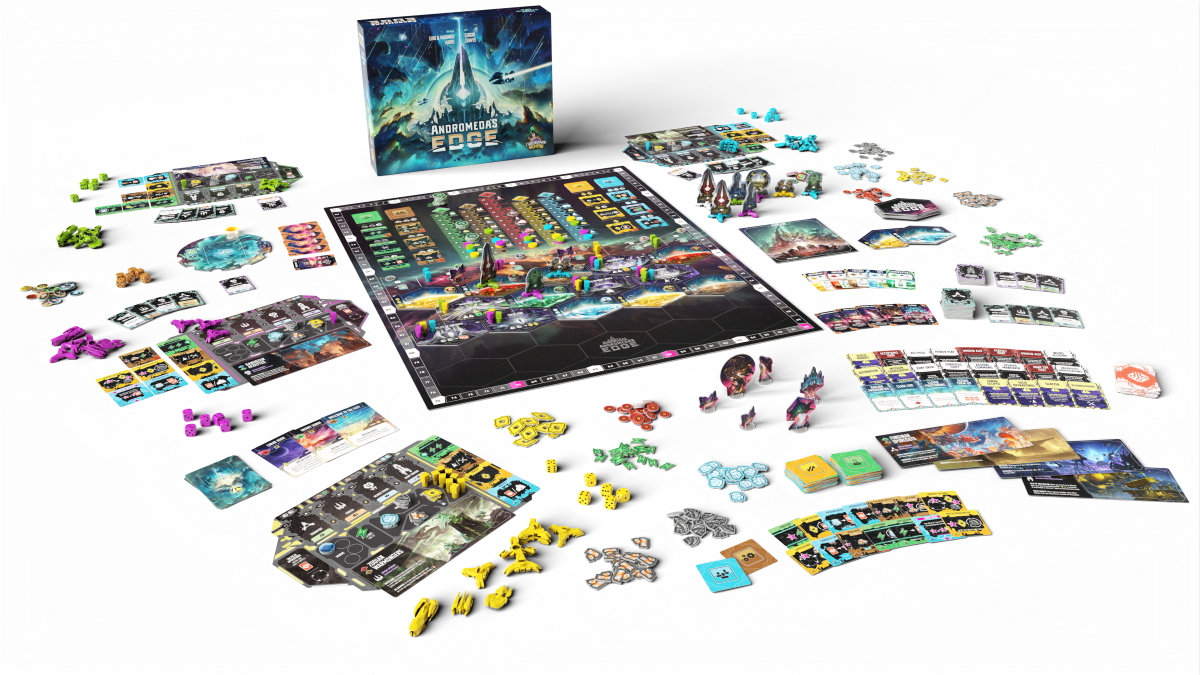
What It Is
Andromeda’s Edge is a complex, multifaceted board game that blends worker placement, resource management, & combat in a rich, sci-fi universe. Players control unique alien factions, each with their own abilities & ships, as they explore space, gather resources, build structures, & engage in strategic combat. The game’s innovative recall mechanic allows players to either launch ships onto the board to perform actions or bring them back to their player boards to activate custom-built modules.
The game is set in a sprawling galaxy represented by a modular board, where each location offers various benefits & challenges. Players manage resources like materials, energy, & special moons, which they can use strategically for immediate advantages or long-term planning. The goal is to build your faction’s power by expanding your territory, upgrading ships, & defeating other players or NPC threats.
Check Out These Recent Board Game Sales
- Board Game Sale: Disney Villainous 25% Off!
- Board Game Sale: Marvel: Crisis Protocol Core Set 30% Off!
- Board Game Sale: 7 Wonders Available for 17% Off!
Gameplay Overview
Andromeda’s Edge combines key mechanics such as resource management, exploration, combat, & technological advancement. Players must carefully balance these elements as they race to gather resources, upgrade their stations, build developments, & engage in battles across the galaxy, all while advancing on various progress tracks. The ultimate goal is to lead your faction to victory by earning the most points when the game ends.
Setting up the game involves placing the main board, event board, & scrapyard in the center, along with event markers that vary based on the number of players. For beginners, the Galactic Dawn event deck is recommended. The game board is populated with shuffled planet tiles & aligned spaces, which differ depending on the player count. For example, in a two-player game, four planets & six aligned spaces are drawn & placed face-up on the board, starting from the top left. Nebula regions, moons, & planetary moon tokens are also set up across the galaxy for players to explore.
Raider factions, which provide an additional challenge, are also set up. An S-Class Raider, such as the Vorticon Strikers, is recommended for first-time players. Raiders are positioned by rolling Raider dice, followed by placing one Raider from each class (A, B, C, & D) across the board. The game length is determined by players, with a shorter 50-point game being suggested for those new to the experience. Players shuffle module decks to reveal new options for technological advancements, while Discovery & Supremacy tokens are placed to provide incentives for exploration & combat.
Each player starts with a station, three transporters, & a Faion card, along with initial resources based on their faction card. These resources allow players to begin advancing along progress tracks. Unique ship upgrade tiles are distributed, & players can also claim one neutral upgrade. Leaders are positioned on aligned spaces or in the nebula, with the first player determined by a dice roll. Each subsequent player places their marker on the next available space on the victory point track, setting the stage for competition.
The game unfolds through turns where players either launch ships to explore & activate regions or recall their ships to their stations for strategic actions. When launching, ships must occupy unoccupied regions, collect moons or resources on planets, or take listed actions on aligned spaces. Players can engage in battles when launching ships into occupied areas, & only certain ships can access the nebula. The collected moons offer valuable resources, which can be slotted into specific spaces for future use or exchanged for other advantages.
Technological advancements come through purchasing modules from the Maximus Field or Odessa Field, which represent science, industry, commerce, & civilization. Each module purchase helps players advance on corresponding tracks & may trigger game-altering events. Other aligned spaces allow players to draw tactic cards, earn credits, build or repair ships, or develop planets, offering a variety of strategic paths to pursue.
Raider strikes & battles are a constant threat. Raiders initiate combat when they move into regions without Raiders or when multiple players occupy the same space. Battle sequences are complex & follow a five-step process: Escalation, Diplomacy, Battle Preparations, Rolling Dice, & Outcome. Players may play diplomacy cards, roll dice to determine targeting values, & fight for supremacy. The victor advances on the Supremacy track, while losers can perform tactical operations or suffer damage.
Throughout the game, players will need to manage ship repairs & use credits & tactic cards effectively. Ships can be repaired at the shipyard or when returning to core modules, while credits act as wild resources to fund various actions. Tactic cards serve as additional resources, providing flexibility in decision-making. The game ends when a player crosses the Terminus on the victory point track, with the player holding the most points declared the winner.
Andromeda’s Edge provides a deep & dynamic strategic experience, with multiple paths to victory. Players will need to balance exploration, combat, & technological development while competing for control of the galaxy. As players become more familiar with the mechanics, they can experiment with different event decks, longer game durations, & more complex strategies, making each game a unique & challenging adventure.
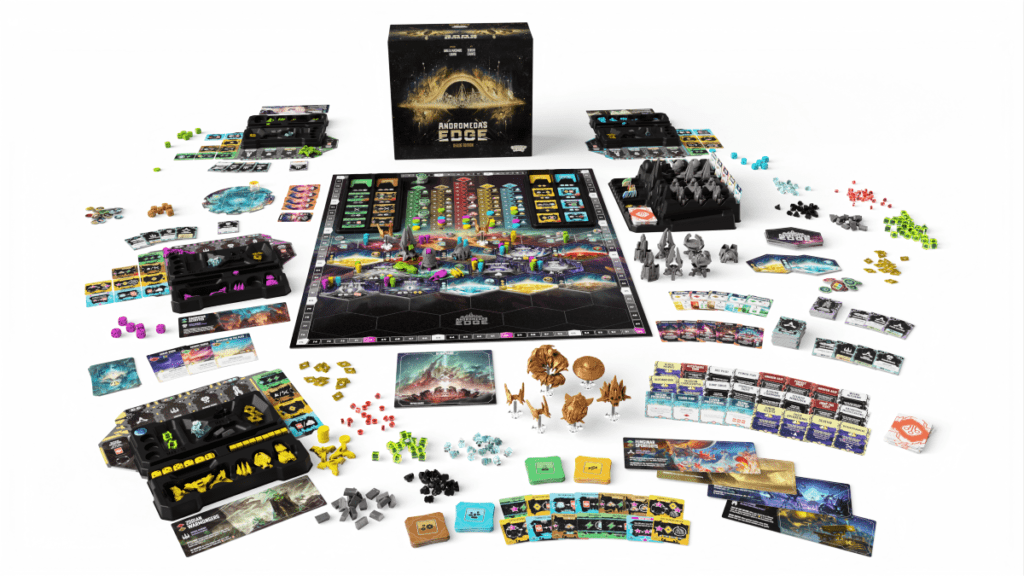
The Components
The components of Andromeda’s Edge are nothing short of impressive, especially in the deluxe version. The miniatures for the alien ships & buildable structures are highly detailed & add a massive presence on the table. A unique feature is how players can transform their ships into structures during gameplay, creating not only a functional aspect but also a visually stunning game board.
The modular board, event decks, & various tokens all contribute to the game’s immersive feel. The artwork is vibrant & complements the theme of space exploration beautifully. However, the game trays in the deluxe version, while well-crafted, might feel unnecessary for some players due to their size & inefficiency in storage.
The Good
One of the standout features of Andromeda’s Edge is its strategic depth. The dual-action system of sending out ships or recalling them to trigger modules creates a satisfying rhythm of play, & the potential for engine-building through module customization offers endless possibilities. The game’s pacing ramps up naturally, providing a strong sense of progression as players upgrade their ships & expand their power.
Replayability is also a big plus. With various alien factions, NPC threats, & different modules, no two games will feel the same. Players can tailor their experience by mixing in event decks or adjusting the level of player interaction, making the game more cutthroat or more peaceful depending on your group’s preferences. This makes the game versatile, allowing for both shorter & longer play sessions that still feel satisfying.
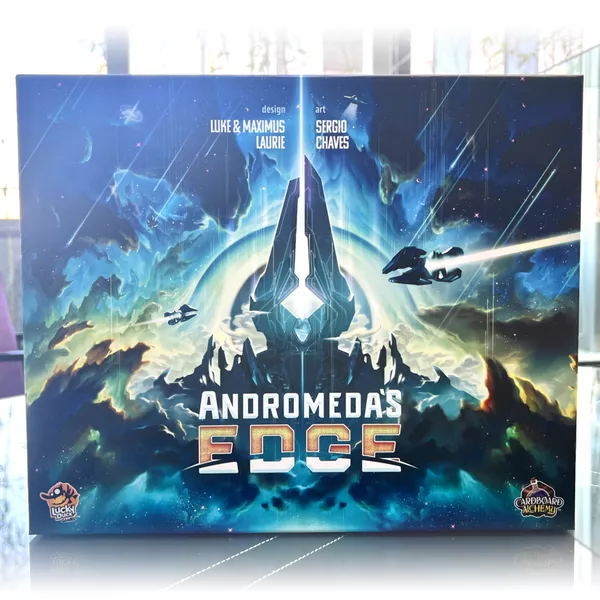
The Bad
That being said, Andromeda’s Edge can be overwhelming for first-time players. The initial learning curve is steep, & the setup time, especially in the deluxe version, can be quite lengthy. While the iconography is intuitive once learned, the sheer number of components & mechanics can intimidate newer players. This can extend the teaching time & potentially put off players who prefer quicker, more accessible games.
Additionally, while the deluxe version shines in terms of component quality, the trays included have drawn some criticism. Many players find them bulky & not entirely practical for efficient storage, which could be an issue for groups tight on table space. The reliance on expansions to keep the game fresh might also be a deterrent for players who aren’t looking to invest further after the base game.
The Verdict
So, should you buy Andromeda’s Edge? If you’re a fan of heavy Euro-style games with deep strategic elements & enjoy sci-fi themes, then this is an easy recommendation. The game rewards players who enjoy optimizing engines & planning long-term strategies, all while delivering an immersive experience of space exploration & combat. The attention to detail in the game’s design, from the modular board to the miniatures, shows that a lot of love & care went into creating this game.
However, if you’re someone who prefers lighter, quicker games or doesn’t want to deal with a long setup & learning curve, Andromeda’s Edge might not be for you. While it offers a rewarding gameplay loop, the complexity & setup time could be a barrier for more casual gamers. Additionally, if you don’t want to rely on expansions for variety, the core box might feel limiting after a few playthroughs.
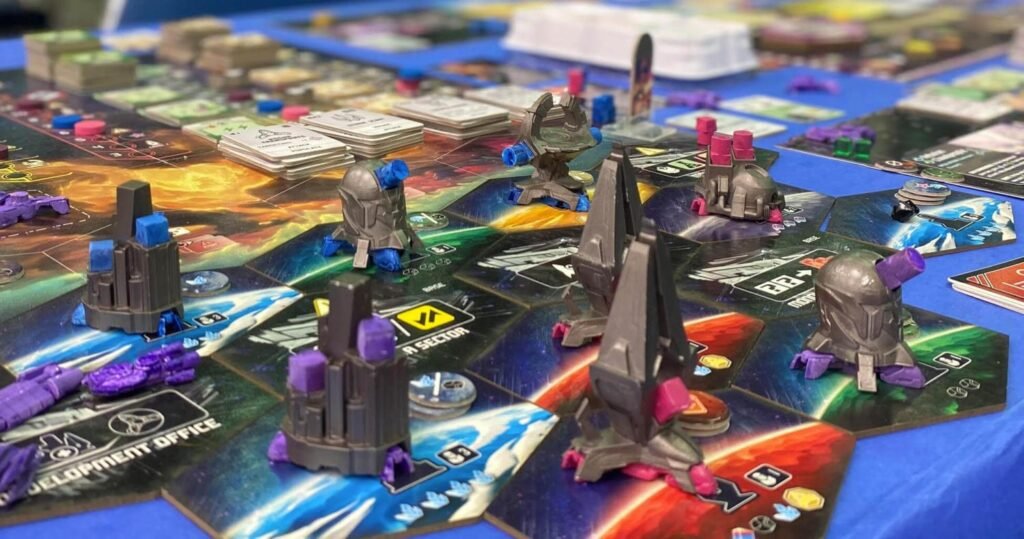
Final Thoughts
Andromeda’s Edge really surprised me in the best way possible. Going into it, I knew it was from the same team behind Dwellings of Eldervale, so I expected something epic. What I didn’t expect was just how much I’d get hooked on the whole experience. Right from the start, the game just feels big—between the massive board, the ship miniatures, & all the different modules you can slot into your player board, it’s got this sense of scale that draws you in. But what really kept me engaged was the flow of gameplay. The back-and-forth rhythm of sending ships out & recalling them to trigger your engine is just so satisfying.
One thing I really liked was how the game gives you a clear sense of progression. You don’t just play your faction—you grow it. As the game goes on, your faction feels like it’s becoming more powerful & more efficient, & that feeling of getting stronger as you play really kept me invested. It’s not just about what you’re doing on the board at any given moment—it’s about how all the little decisions you make start to snowball into something bigger.
The combat system was another pleasant surprise. I’m not usually a fan of dice-heavy battles, but Andromeda’s Edge keeps things quick & strategic without making it feel random or punishing. Even when I lost battles, I didn’t feel like I was out of the game or missing out on important actions. In fact, some losses actually set me up for a stronger next turn, which made me appreciate how thoughtful the design was.
Now, if I’m being honest, the setup time is a bit of a hurdle. The deluxe components are beautiful, but those game trays? They’re kind of overkill. It makes getting the game on the table feel like a process. That said, once you’re actually playing, you forget about all that because the gameplay is just so engrossing. But yeah, expect to spend a bit of time getting everything organized before you can dive in.
If you’ve played Dwellings of Eldervale, you’ll definitely see the similarities here, but Andromeda’s Edge stands on its own. The sci-fi theme works really well, & I actually prefer it to the fantasy setting. The factions feel distinct, & the galaxy feels alive with all the different locations & roaming NPC ships. Plus, there’s a ton of replayability. Every game I’ve played has felt different, depending on what modules I chose or which strategies I leaned into.
At the end of the day, I had a blast with this one. It’s definitely not for everyone—it’s a big, strategic game that requires some commitment—but if you’re into worker placement with a lot of depth, or you just love a good space-themed game, I can’t recommend Andromeda’s Edge enough. It’s one of those games where you finish a session & immediately start thinking about what you’d do differently next time. For me, that’s always the sign of a great game.
Purchase Options

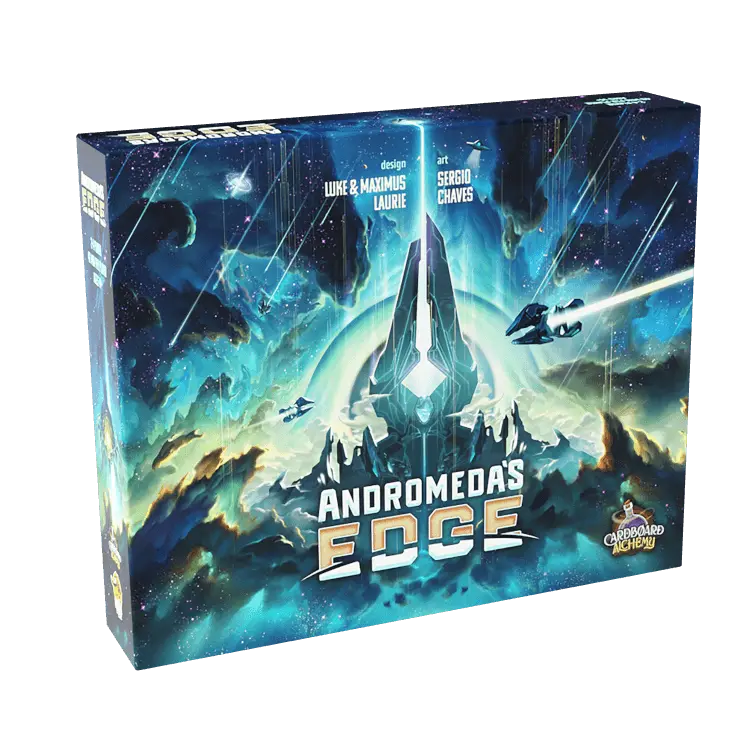
At no extra cost to you, The Board Game Site may receive revenue from affiliate and advertising partnerships for sharing this content and from purchases through links.



